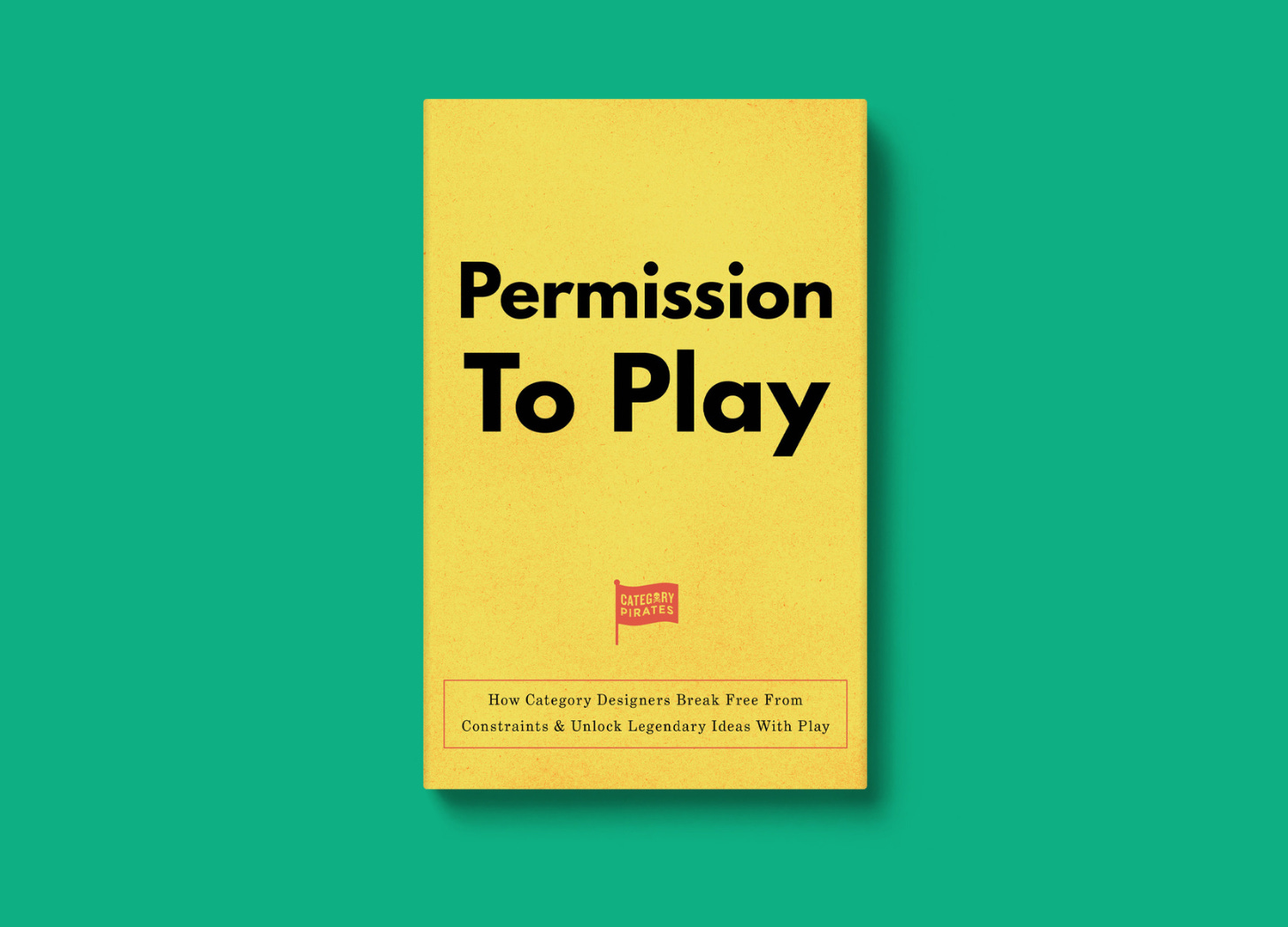Permission To Play: How Category Designers Break Free From Constraints & Unlock Legendary Ideas With Play
Legendary ideas come from "just f*cking around" more often than formal planning.
Arrrrr! 🏴☠️ Welcome to a 🔒 subscriber-only edition 🔒 of Category Pirates. Each week, we share radically different ideas to help you design new and different categories. For more: Dive into an audiobook | Listen to a category design jam session | Enroll in the free Strategy Sprint email course
Dear Friend, Subscriber, and Category Pirate,
Every legendary creation has an origin story.
Most people think masterpieces emerge from careful planning, structured brainstorming, or calculated genius.
They (often) don't.
Take one of rock's most iconic riffs – a melody that would become the backbone of Guns N' Roses' only #1 hit. The song that made millions of teenagers beg their parents for electric guitars. The kind that changed the trajectory of rock music. Forever.
🔊 Want to listen to this mini-book instead? Head to the audiobook.
Here's what most people don’t know about “Sweet Child o’ Mine.”
It started with artists giving each other Permission to Play.
The song didn’t come from a structured songwriting session. It wasn’t a prescribed warm-up routine — just lead guitarist Slash messing around with a riff. As Slash played, rhythm guitarist Izzy Stradlin added chords to complement the melody.
The impromptu jam caught the attention of singer Axl Rose, who was upstairs.
Intrigued, Rose came down and asked the guys to play it again.
As Slash and Izzy repeated the progression, Rose started improvising vocal melodies over the top. The words came from a poem he was writing. Which became the lyrics of "Sweet Child o' Mine." Slash admitted he initially didn't think much of the riff, describing it as a "circus melody." However, as the band continued to work on it, the song's potential became apparent.
The circular nature of the riff (which engages almost every finger of the fretting hand as it dances around the upper frets) became the song's defining feature.
Released as a single in 1988, "Sweet Child o' Mine" quickly climbed to number one on the Billboard Hot 100 chart.
This marked Guns N' Roses' breakthrough moment in mainstream rock. “Sweet Child o’ Mine” became the band’s only number-one single in the United States. Its success helped the Appetite for Destruction album reach multi-platinum status and cemented Guns N’ Roses' place in rock history.
The song that made G N’ R was an accident.
Of play.
This is the secret sauce nobody talks about.
Innovation rarely strikes when we try to be innovative.
Scheduling innovation from 2:30 to 3:30 pm on Thursdays doesn't work. It comes from the moments when we give ourselves permission to explore. Without judgment. When we allow ourselves to traverse the landscape of possibilities without a predetermined destination.
What happened next is where the magic lies.
One guitarist's experimental noodling caught the ear of a rhythm guitarist, who started adding layers. Then, a vocalist heard it from upstairs and was drawn to investigate. Layer by layer, Permission to Play turned into collaborative creation.
Here's the billion-dollar insight:
If Slash had censored himself by thinking, "This sounds too circus-like" or "This isn't heavy enough for a rock band," one of the most recognizable songs in music history would have died before it was born.
Our inner critic (that voice in our heads) is loud.
And often negative.
Further, we cannot always tell when we have a great idea. Sometimes, we say or do something that has massive potential to become legendary — and it takes someone else to recognize it. It’s remarkable how often this is the case. That’s why learning to recognize ‘legendary’ is as valuable as learning to create ‘legendary.’
When we play, when we’re in flow, when we riff, jam, fool around, act without concern, free up, think out loud, and let ourselves go…
Legendary things happen.
This is the "Permission Paradox."
The more permission you give yourself to explore seemingly silly or unconventional ideas, the more likely you stumble upon something extraordinarily different.
Want to create a Category Point of View that makes people stop and listen? Stop trying to create something legendary. Instead, give yourself Permission to Play. Permission to experiment. Permission to follow your curiosity down whatever zebra hole it leads you.
(Curiosity is key to legendary.)
Because sometimes, what starts as an experiment ends up changing the future.
In this mini-book, we explain how to create legendary work via play:
You’ll learn about the Permission Paradox, the 3 ways it manifests, and why brainstorming is the root of Competition Derangement Syndrome.
You’ll understand how to create conditions for play and the traits to look for in “bandmates.”
You’ll walk away with a Jam Session Framework that explains how we approach our weekly jam sessions and what happens when we spot each other’s legendary ideas.
Grab your guitars, pirates — it’s time to jam. 🎸🤘
The Permission To Play Mindset
Every Category Designer faces a trap when waiting for the perfect conditions to share their 'game-changing' ideas.
But the perfect condition isn't external readiness — it's internal permission.
This is the “Permission Paradox”: the more you try to control the creative process, the less likely you are to create something legendary. The paradox is that permitting yourself to play isn't just a condition for creativity. It is the perfect condition. Because real innovation comes from giving yourself Permission to Play, experiment, and look stupid.
The Permission Paradox reveals itself in three distinct ways:







